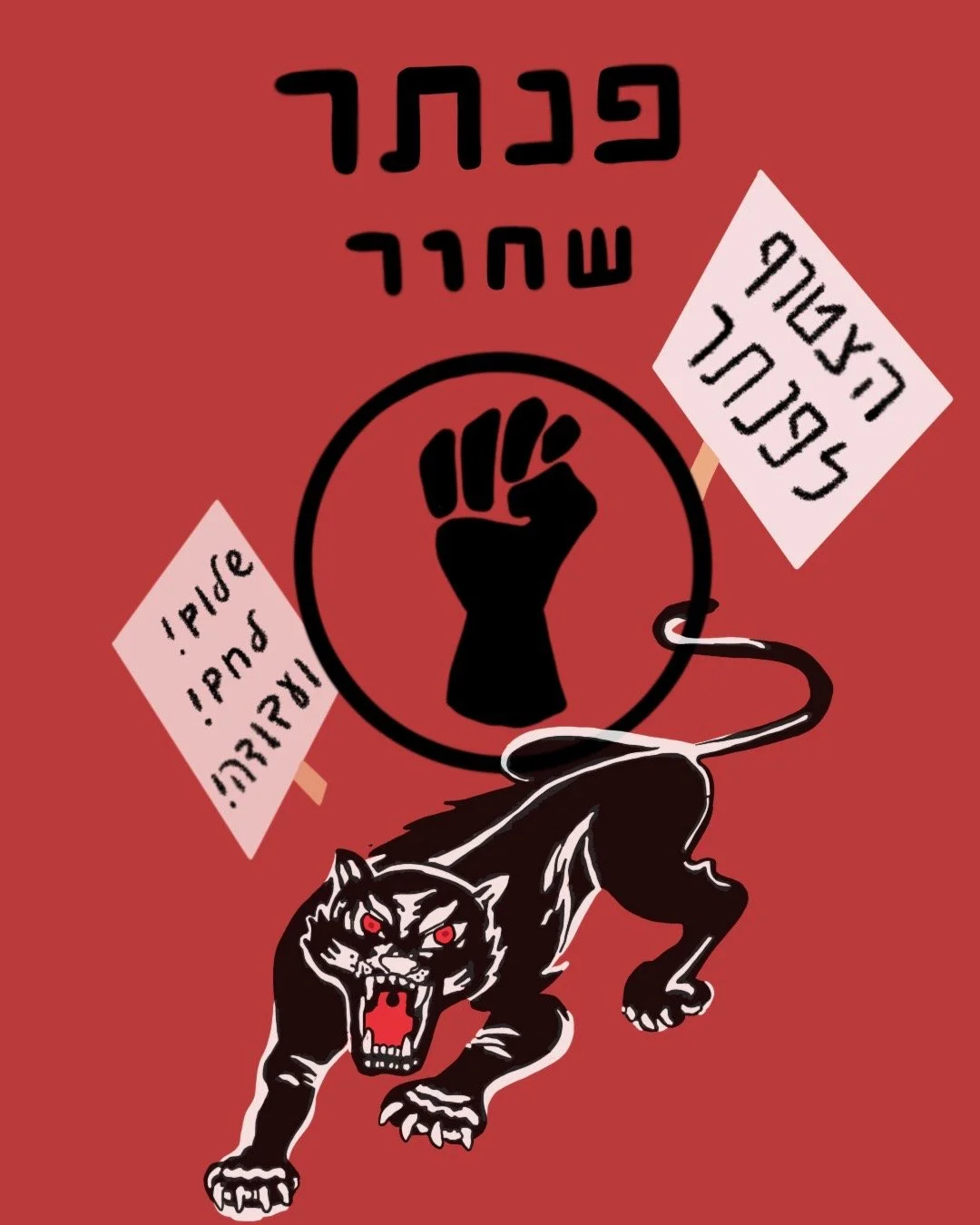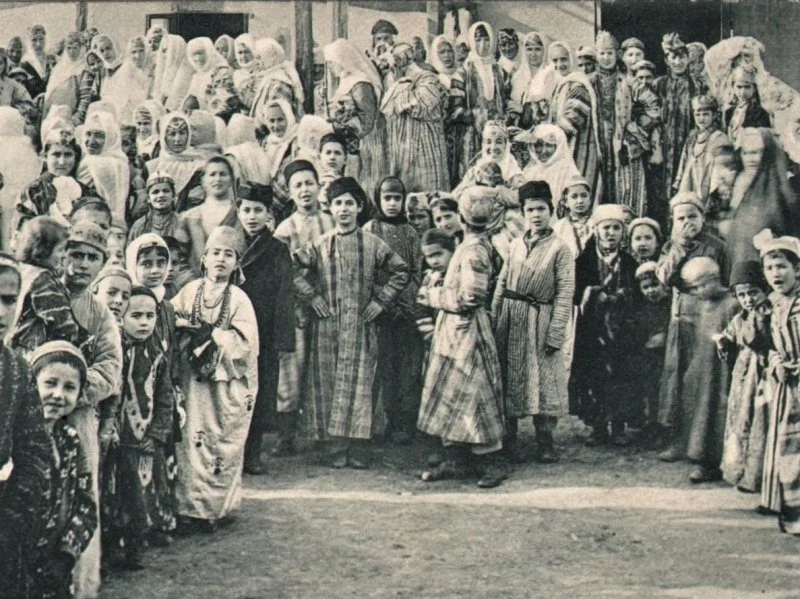European Zionism and Forced Assimilation of Diverse Jewish Communities in Palestine
Zionist occupation reshaped diverse Jewish communities by imposing European ideals and suppressing their cultural heritage
When Theodor Herzl, a noted atheist, first spoke of a Jewish homeland, promised by a god in whom he did not believe, he did so from Switzerland—on a continent where many of the Jewish diaspora had been living for nearly two millennia.
Herzl's vision for a new Jewish nation-state was distinctly European in its archetype, reflecting the ideals and aspirations of Western nationalism.
What it failed to account for, however, was the fact that Arab Jews had lived continuously in the region for centuries, existing within a vastly different cultural and historical context.
Prior to the arrival of proto-Zionism in the region, Arab Jews, known as Mizrahi, shared the area with Arab Christians and Muslims alike.
Once established, however, the state of Israel immediately imposed policies aimed at westernizing the region, subsequently assimilating non-European Jewish communities into a decidedly European-Jewish identity, disregarding their cultural heritage.
This strategy of forced assimilation, which echoed the tactics of other colonial powers, was all part of a larger plan to keep Palestinians from their homeland and supplant them with a new Zionist population.
Herzl’s manifesto, Der Judenstaat, which calls for the establishment of a World Zionist Organization, is not unlike Hitler’s Mein Kampf in that each serves as a blueprint for a Euro-nationalist ideology.
A European Vision for a Jewish State: Early Zionist Biases
The Zionist movement of the late 19th and early 20th centuries focused almost exclusively on European Jews.
Leaders such as David Ben-Gurion and Chaim Weizmann viewed European Jews as the architects of the Jewish nationalist state. Their goal was to build a nation that reflected Western values, technological progress, and perceived cultural sophistication.
Initially, non-European, semitic groups, including Mizrahi, Sephardi, Ethiopian, Indian, Bukharan and Mountain Jews of the Caucasus were considered irrelevant—or worse, unsuitable—for this vision.
Arthur Ruppin, a prominent figure in the Zionist movement, expressed these biases explicitly in 1911 when he described Mizrahi Jews, particularly Yemenite and Persian Jews, as ideal only for “menial labor. “
Ruppin’s view, that it was "desirable that only the racially pure come to the land,” reflected a broader European-centric prejudice within Zionist leadership, on which saw non-European Jews as culturally "backward" and in need of "modernization."
Similarly, many early kibbutzniks saw all Arab peoples as lowly, even hiring them as cheap labor.
This prejudice laid the foundation for a hierarchy that would soon place Ashkenazi (European) Jews at the top and relegate others to the margins.
Moroccan Jewish Immigrant doing what Ruppin refers to as “menial labor”
Demographic Realities Post-1948: Turning to Non-European Jews
When Israel declared independence in 1948, the need for a Jewish majority to secure the nascent state's survival became apparent. If the state was going to successfully cleanse the land of its rightful inhabitants, it would need to set up strategic settlements to fill the disputed* territories.
*a term deliberately used by Israel as a means of controlling the narrative, despite its international recognition as Occupied Palestinian Territory (OPT)
European immigration, which had been prioritized, began to slow following the end of World War II.
Facing a demographic and labor crisis, the state turned to Mizrahi Jews, many of whom, incidentally, were fleeing rising anti-Semitism in Arab countries, stoked in part by the audacious assertion of Zionism and its historically divisive tactics.
In 1948, Israel's declaration of independence on Palestinian land led to an invasion by five Arab nations, in addition to widespread repressive measures against Jewish communities in surrounding areas. This resulted in mass migration from of those communities into Israel.
Mass immigration campaigns like Operations Ezra and Nehemiah brought over 120,000 Iraqi Jews to Israel.
Similarly, Operation Magic Carpet transported approximately 49,000 Yemenite Jews. Of course, despite the revisionist narrative presenting this operation as a miraculous journey of salvation, the reality was far grimmer.
While the initiative involved cooperation between Israeli authorities, Jewish organizations, and local rulers in Aden and Yemen, the operation's hasty execution led to catastrophic failures.
Hundreds of Yemenite Jews lost their lives due to organizational mismanagement by the American Jewish Joint Distribution Committee, the Jewish Agency, and the Israeli government.
These operations, presented as efforts to rescue Jews from persecution, were, in reality, deeply pragmatic moves to populate areas emptied of Palestinians and provide a labor force for the new state.
In essence, these non-European Jews served as indentured placeholders to prevent Palestinians from returning to their homeland.
Building strategic settlements on illegally occupied land was one way Israel fortified itself against resistance by the indigenous of the land
Ethiopian Jews, known as Beta Israel, faced extraordinary challenges in their migration to Israel.
Geographic and political isolation relegated this group to something of an afterthought in Zionism’s grand design.
Despite their longstanding Jewish identity, they were met with skepticism upon arrival, being referred to by the disparaging '“Falasha,” historically used by Ethiopian authorities and European observers, meaning “stranger” or “exile.”
Indian Jews, including the Bene Israel, Cochin Jews, and Baghdadi Jews, experienced a similar struggle, largely treated as second-class citizens upon arrival.
Bukharan Jews from Central Asia and Mountain Jews from the Caucasus faced unique cultural and linguistic barriers, further marginalizing them in Israeli society.
Forced Assimilation and Cultural Erasure
Once in Israel, non-European Jewish communities encountered systemic efforts to erase their cultural identities. The Zionist leadership's preference for an Ashkenazi model of Israeliness—that is, white, European Jewishness—dictated policies that marginalized and suppressed the rich traditions of Mizrahi, Ethiopian, and other Jewish groups.
Not unlike the Indian boarding schools in the U.S., Israel's education system became a tool for erasure. Mizrahi and Sephardi histories, languages, and cultural practices were excluded from the curriculum.
Students were taught to abandon Arabic, Ladino, and other ancestral tongues in favor of a modernized version of Hebrew—created by Eliezer Ben-Yehuda, a Zionist nationalist who spearheaded its “revival” and imposition. Ethiopian Jews faced similar erasure, with Amharic and their unique Jewish customs dismissed as irrelevant. Even for European Jews, Yiddish was often discouraged, and its usage mocked, as a symbol of exile and victimhood.
Haaretz writer Arieh Gledblum claimed in 1950 that North African Jews’ “primitivism is unsurpassed…. They have little talent for comprehending anything intellectual” and “lack any roots in Judaism.”
The government relegated many non-European Jewish immigrants to ma'abarot (transit camps) and development towns out of the immediate sight of Israelis. These areas were underfunded and isolated, perpetuating cycles of poverty and reducing access to quality education and employment.
Non-European Jews often found themselves in isolated, underfunded settlements, cut off from economic centers and opportunities. As with other Mizrahi groups, Moroccan immigrants faced systemic discrimination, including policies that funneled them into low-paying labor roles and deprived their children of quality education
This geographic segregation reinforced the systemic marginalization of non-European Jews, solidifying their roles as laborers rather than equal participants in the Zionist project.
Mizrahim immigrants in transit camps
The Israeli Rabbinate, dominated by Ashkenazi authorities, further alienated non-European Jews by challenging their religious practices.
Ethiopian Jews, for instance, faced questions about the legitimacy of their Judaism, and efforts were made to "correct" their religious observances.
Similarly, the traditions of Mizrahi, Sephardi, and other Jewish groups were sidelined in favor of an Ashkenazi interpretation of Jewish law under the Talmud.
Despite systemic marginalization, non-European Jewish communities resisted their erasure through cultural and political movements.
The Israeli Black Panthers, founded by Mizrahi activists, protested against discrimination and demanded social and economic equality. Artistic expressions also became powerful tools of resistance, with writers, musicians, and filmmakers highlighting the beauty of their heritage and challenging the dominance of Ashkenazi culture.
Ethnic Representation in Governance: A Nationalist Zionist Majority
Non-European Jewish communities have long faced underrepresentation in Israel's government and political leadership, a reflection of the state's Eurocentric roots.
For decades, Ashkenazim have dominated key political and administrative roles, shaping a government that prioritizes Western ideals over the diversity of its population.
Over time, incremental changes have increased the presence of Mizrahi and Sephardi individuals in political leadership, particularly within the Likud party.
Today, the Likud party—Israel’s dominant political force—is supported by a substantial base of Sephardi and Mizrahi voters, with roughly 58% of its voter base identifying as Sephardi or Mizrahi.
However, the party’s leadership remains predominantly Ashkenazi, and Israel has yet to see a Mizrahi prime minister.
Regardless of ethnicity, the modern-day Likud party reflects a nationalist Zionist majority, with figures like Itamar Ben Givr and Bezalel Smothrich, religious zealots with terrorist ties, emphasizing policies that maintain its vision of Israel as a Jewish state often at through genocidal means.
Ethiopian Jewish Immigrants arrive as part of Operation Solomon (Photo: Albert Natan)
Breaking Free: Decolonizing Identity and Reclaiming Heritage
Today, much like Indigenous groups throughout the U.S. and Canada, non-European Jewish communities in Israel are embarking on a journey to decolonize, heal and reclaim their cultural heritage from a white supremacist narrative under which it has been concealed for far too long.
By challenging the Eurocentric narratives that have long dominated society, they are asserting their unique histories and identities that were suppressed under the Israeli mandate of assimilation.
This movement is not just about preserving traditions but also about dismantling systemic inequalities and rejecting the structures of nationalism that perpetuate oppression.
The future lies in a collective struggle, wherein resisters of Zionism—whether Jews, Christians, Muslims, or anyone—can unite under an intersectional, collective movement to build a society free of oppressive state power hierarchies.
True liberation can only be achieved when the systems that enforce exclusion and erasure are dismantled, and the voices of the marginalized are no longer silenced. It is essential, therefore, for those who can, to lift our voices; screaming in unison against injustice until the world can no longer ignore the sound.








